Introduction to EcholoN CMDB software
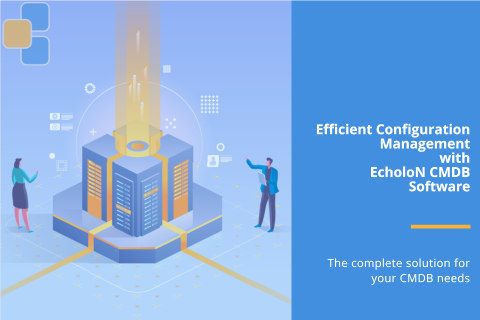
The management of IT infrastructures is presenting companies with ever greater challenges. In view of the increasing complexity and dynamics of digital systems, configuration management is becoming increasingly important. This is where the EcholoN CMDB software comes into play, offering an efficient and flexible solution for the management of configuration items. In EcholoN, a CI is simply an object with a specific characteristic. EcholoN objects can be customised according to need, requirement and use case depending on the process. The EcholoN Workflow Engine takes over the automation of workflows from the process definitions.
What is a Configuration Management Database (CMDB)?
A configuration management database is a central database that stores all essential information about the components of a company's IT infrastructure and their relationships to each other. These components, also known as configuration items (CIs), can include hardware, software, network elements, but also services and associated documentation. A CMDB enables IT managers to have a transparent overview of the IT landscape, track changes and analyse the effects of incidents or planned changes. This not only increases efficiency, but also supports risk minimisation and compliance.
The role of the EcholoN CMDB in the modern IT infrastructure
In today's fast-moving and constantly evolving IT world, agile and reliable CMDB software is essential. The EcholoN CMDB is an integral part of the EcholoN Enterprise Service Management Suite. It goes beyond the traditional role of a CMDB by serving not only as a data repository, but also as a dynamic tool for IT Service Management (ITSM). With its help, companies can better understand, manage and optimise their IT systems and processes. The EcholoN CMDB plays a key role in supporting ITIL processes (IT Infrastructure Library). This is particularly important in the area of change management and incident management. By providing a complete picture of the IT environment, it enables more efficient planning, implementation and evaluation of changes as well as faster diagnosis and resolution of incidents.
Overview of the core functions and benefits of the EcholoN CMDB
The EcholoN CMDB software is characterised by a number of core features that make it a valuable resource for any organisation. These features include:
- Centralised data management: EcholoN allows all CIs and their lifecycle to be centrally recorded and managed, ensuring a unified and consistent database.
- Flexibility and adaptability: The software adapts to the specific needs and requirements of your organisation and can grow and develop with your infrastructure.
- Automated documentation and visualisation: EcholoN automates the documentation of the IT landscape and provides visual representations of the relationships between CIs, making it easier to analyse and understand the IT infrastructure.
- Support for ITIL processes: Integration with ITIL processes such as Incident Management, Problem Management and Change Management improves the efficiency and effectiveness of these processes.
The benefits of EcholoN CMDB extend beyond pure data management to include improved decision making, greater IT agility, risk minimisation and increased overall efficiency of IT operations. Organisations using EcholoN CMDB software benefit from a robust, scalable and easy-to-use solution that is designed to meet the challenges of modern IT environments and add value to IT operations and the entire organisation.
Key features of the EcholoN CMDB software
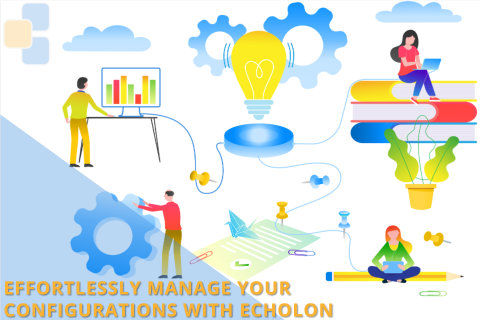
The EcholoN CMDB software offers a range of advanced features that make it an indispensable tool for managing modern IT infrastructures. In this section, we focus on the key features of the EcholoN CMDB, including centralised data management, the flexibility and scalability of the software and its seamless integration with existing infrastructures and third-party tools.
Centralised data management for all configuration items (CIs)
One of the core features of the EcholoN CMDB software is its ability to centralise data management. All configuration items - from hardware components and software applications, virtual systems to business services and service agreements - are recorded in a single, centralised database. This central storage allows the IT organisation to quickly access detailed information about each configuration management of the IT infrastructure, including its specifications, current status and relationships to other CIs. This comprehensive visibility facilitates the effective management of IT resources, promotes data accuracy and improves decision-making in the event of changes or disruptions within the IT environment. According to the ITIL 4 definition, CIs are "all components that need to be managed in order to provide an IT service"
Flexibility and scalability for different company sizes
The EcholoN CMDB software is characterised by its remarkable flexibility and scalability, which makes it suitable for companies of different sizes and industries. Regardless of whether it is a small start-up or a large, multinational organisation, the CMDB can be adapted to the specific requirements and growing complexity of the IT infrastructure. The software supports modular implementation, which means that organisations can start with basic functionality and add additional modules and features as required. This scalability ensures that the CMDB can grow with the organisation and adapt to changing business conditions without the need for a complete overhaul of the system.
Integration into existing infrastructures and third-party tools
Another outstanding feature of the EcholoN CMDB software is its ability to integrate seamlessly with existing IT infrastructures and its compatibility with third-party tools. The software is designed to fit easily into existing systems and applications, easing the transition for IT teams and reducing the need for extensive reorganisation or reconfiguration. In addition, EcholoN provides robust APIs and interfaces for integration with a variety of configuration management tools, network monitoring solutions and other ITSM platforms. This interoperability enables centralised control and management of all IT resources, promotes the automation of IT processes and improves the efficiency and effectiveness of overall ITSM.
In summary, the key features of EcholoN CMDB software - centralised data management, flexibility and scalability, and seamless integration - make it a valuable solution for companies looking to effectively manage and optimise their IT infrastructure. With EcholoN, companies can not only utilise their IT resources more efficiently, but also improve service quality and achieve greater IT alignment with business objectives.
Application scenarios and use cases of a CMDB
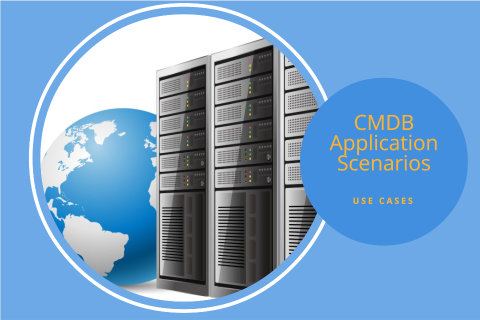
The EcholoN CMDB software is a versatile tool that provides valuable services in a variety of application scenarios and use cases within a company's IT infrastructure. From the comprehensive management of IT assets and their inventory to support for change management processes, risk minimisation and compliance assurance. Another important distinction in CMDB utilisation is between configuration items and assets - EcholoN offers solutions for the complex challenges of any size of company.
IT asset management and inventory
A central use case of the EcholoN CMDB software is IT asset management and inventory. The ability to record and manage all IT assets in a single, centralised database enables companies to gain a complete overview of their IT resources. Simple examples include hardware such as servers, workstations, network components as well as software licences, applications and all associated documentation. The precise inventory of these assets not only helps to maintain an overview and optimise usage, but also to plan budgets and avoid unnecessary expenditure due to over-licensing or redundant resources. In addition, the CMDB makes it easier to find assets for maintenance or upgrade purposes and supports the planning of IT projects and initiatives.
Support for change management processes
Another important area of application for the EcholoN CMDB is support for change management processes. Changes to the IT infrastructure, whether through the introduction of new technologies, upgrades to existing systems or the restructuring of networks, harbour risks for ongoing operations. The CMDB tool provides a detailed view of all configuration items and their dependencies, allowing the impact of planned changes to be better understood and assessed. This enables careful planning and implementation of changes, minimises downtime and maximises the success rates of change processes. By documenting all changes, the CMDB also contributes to the traceability and continuous improvement of IT processes.
Risk management and compliance assurance
The EcholoN CMDB makes a significant contribution to risk management and compliance assurance. By centrally recording and analysing information about all CIs, potential security risks and vulnerabilities can be identified at an early stage. The CMDB supports the identification of non-compliant configurations, outdated software and hardware information and other factors that could affect the security and compliance of the IT system. The software enables companies to take proactive measures to minimise risks and ensure compliance with internal guidelines and external regulations and standards. In addition, the EcholoN CMDB supports reporting and audits, making it easier to prove compliance with requirements.
The deployment scenarios and use cases of CMDB tools provide a comprehensive approach to managing and optimising IT infrastructure in IT operations. By improving asset management, supporting effective change management processes and promoting robust risk management and compliance, EcholoN contributes significantly to increasing the efficiency, security and reliability of IT operations.
Differentiation between CIs and assets
In the context of IT service management and specifically within a CMDB, it is important to differentiate between configuration items and assets. Although the terms are sometimes used interchangeably, they refer to different concepts:
- Configuration Items: CIs are the basic components within a CMDB. The focus here is not only on the physical existence of the components, but also on their role and relationship within the IT services. CIs are usually documented in detail, including their relationships to other configuration items, in order to provide a complete picture of the IT service landscape and its dependencies.
- Assets: Assets are the physical and financial resources that belong to an organisation and are listed on the balance sheet. Assets can include CIs, but go beyond that to include non-IT related items such as office furniture, buildings and vehicles. In the context of IT, assets typically include all IT components, regardless of whether they are directly involved in the provision of an IT service. The focus of assets is on their financial and contractual aspects, such as acquisition costs, depreciation, maintenance contracts and warranty conditions.
The differentiation between assets and CIs enables more precise management and monitoring of the IT infrastructure. While CIs help to understand and manage the dependencies and structure of IT services, assets provide insights into the financial and contractual aspects of IT and business resources. This distinction helps companies to optimise both the technical and financial management of their infrastructure, make informed and better decisions about (IT) investments, risk management and compliance.
Technical Architecture and Security Aspects in Configuration Management
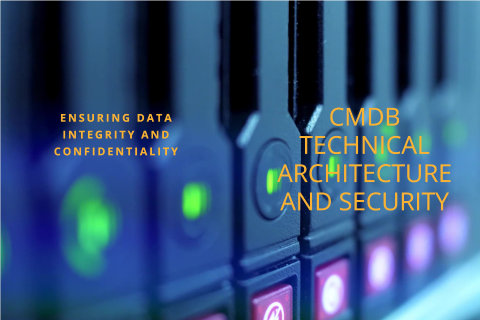
The EcholoN CMDB software is characterised not only by its versatile functions and application options, but also by its solid technical architecture and comprehensive security measures. This section looks at the data model and structure of the EcholoN CMDB, its security features and data protection compliance as well as the adaptability of the software to specific security requirements.
Data model and structure of the EcholoN CMDB
The data model of the EcholoN Configuration Management System (CMS) is easily customisable and designed to provide a comprehensive and flexible representation of a company's infrastructure. It is based on a flexible business object model with a relational read model that supports the storage and management of information about all configuration items as well as their relationships and dependencies. The structure of the CMDBs is designed to allow any arrangement of objects. This modular, extensible model allows CMDBs to be customised to the specific requirements and complexity of an organisation's IT landscape, while providing the flexibility needed to keep pace with changes in the IT infrastructure.
Security features and data protection compliance
Security and data protection are central aspects of the EcholoN CMDB software. It includes a wide range of security features aimed at ensuring the integrity, availability and confidentiality of the data stored in the CMDB. These include measures such as encrypted data transmission, regular security updates, access controls and authentication mechanisms that ensure that only authorised users have access to sensitive information. In addition, the EcholoN CMDB is designed to be compliant with current data protection standards and regulations, such as the European Union's General Data Protection Regulation (GDPR). This ensures that personal data and other sensitive information is processed and protected in accordance with legal requirements.
Adaptability to specific security requirements
The EcholoN CMDB software is characterised by its adaptability to the specific security requirements of different organisations. The software offers flexible configuration options that enable IT teams to design security settings and policies according to the individual needs of their organisation and the specific requirements of their IT environment. Whether it's implementing additional levels of authentication, customising access rights or integrating with existing security systems, EcholoN provides the flexibility needed to ensure a high level of security without compromising the usability or performance of the CMDB.
In summary, EcholoN CMDB software offers a robust technical architecture and extensive security features that enable organisations to effectively manage their IT environment while meeting the highest security and data protection standards. EcholoN's adaptability to individual security requirements provides a flexible and reliable solution for configuration management in today's complex and dynamic IT landscape.
Implementation and integration of a CMDB
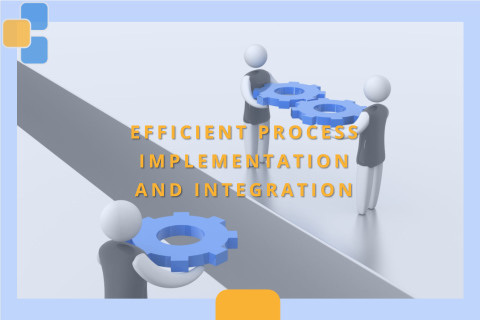
The successful introduction of the EcholoN CMDB software in a company is a decisive step towards optimising IT infrastructure management. This section describes the necessary steps for implementation, integration into existing systems and processes and the options for customising and extending the EcholoN CMDB using plugins and APIs.
Steps for the successful implementation of the EcholoN CMDB
The implementation of the EcholoN CMDB begins with careful planning and preparation to ensure that the software is seamlessly integrated into the existing IT environment and meets the specific requirements of the organisation. Key steps include:
-
Requirements analysis1
Determination of the specific requirements and objectives that the CMDB should fulfil, including the configuration items to be managed and the IT processes supported.
-
Lay the foundations2
Before you start implementing a CMDB, it is important to have a clear understanding of the use cases and objectives that the CMDB is intended to support. A CMDB is at the centre of ITSM as it only provides data managed in the CMDB that is essential for the management of IT services.
-
Stakeholder engagement3
Involving all relevant stakeholders, including IT management, system administrators and end users, to understand their needs and expectations.
-
Infrastructure analysis4
Review of the existing IT infrastructure in order to plan the integration of the CMDB and identify potential challenges.
-
Planning and design5
The CMDB should be planned carefully to ensure that the data in the CMDB contains exactly the information needed to manage the IT services. A guide for the organisation can help to create and structure the CMDB. It is crucial that the data in the CMDB is accurate and up-to-date to maximise its effectiveness.
-
Pilot project6
Carrying out a pilot project or test phase to test and adapt the configuration of the CMDB before it is fully implemented.
-
Training and documentation7
Providing comprehensive training for users and creating detailed documentation to support the effective use of the CMDB.
Integration into existing systems and processes
The EcholoN CMDB is designed to integrate seamlessly with existing IT systems and business processes to enable centralised and coherent management of IT assets. Important aspects of integration include:
- Data synchronisation: automatic synchronisation of data between the CMDB and other IT management tools to ensure consistency and timeliness of information.
- Process integration: Connection to existing ITIL processes such as Incident Management, Problem Management and Change Management to provide end-to-end process support.
- User interaction: Integration into user interfaces and portals to facilitate access to CMDB data and functions for different user groups.
Customisation and expansion through simple configuration and APIs
The flexibility of the EcholoN CMDB allows companies to customise and extend the functionality of the software through graphical configuration and APIs. This offers several advantages:
- Customised solutions: No-code configuration to meet unique requirements and adapt the CMDB functionality to the specific needs of the organisation.
- Third-party tool integration: Use of APIs, WebServices, GraphQL, to enable smooth integration with a variety of third-party tools and systems, from network monitoring to ticketing systems.
- Automation and increased efficiency: Use APIs to automate processes, reduce manual effort and increase the efficiency of IT management.
Through careful implementation, seamless integration with existing systems and customisation and extension of the EcholoN CMDB, companies can manage their IT infrastructure more effectively, improve service quality and ultimately get more value from their IT investment.
Data integration from different data sources automates the maintenance of CIs
The ability to integrate and automate the maintenance of configuration items from different data sources is an important aspect. This capability expands the application possibilities of the CMDB by providing a dynamic and up-to-date view of an organisation's IT infrastructure. This not only improves the accuracy and reliability of the data stored in the CMDB, but also significantly reduces the manual effort required to maintain the CIs.
Automated data aggregation
The EcholoN CMDB can automatically collect and integrate data from a variety of sources, including network discovery tools, inventory software, cloud services and other IT management systems. This integration ensures that the CMDB is continuously updated to reflect changes in the IT infrastructure without the need for manual input.
Synchronisation and consolidation of data
Another important aspect of automated data integration is the ability of the EcholoN CMDB to synchronise and consolidate data from different sources. This means that duplicates are eliminated, inconsistencies are eliminated and relationships between CIs are precisely mapped. For example, the CMDB can synchronise information from Network Discovery with data from the change management system to create a comprehensive and accurate picture of each CI, including its historical changes and current configuration.
Facilitating compliance and audit processes
The integration and automated maintenance of data also supports compliance and audit requirements. By ensuring that all data in the CMDB is up-to-date and accurate, organisations can more easily demonstrate that their IT infrastructure and processes comply with applicable regulations and standards. Automated reports and dashboards provide a quick overview of compliance status and facilitate auditing.
Improving decision-making
Ultimately, automated data integration from various sources enables more informed decision-making. IT managers and decision makers can rely on the reliability and timeliness of the data in the CMDB to make strategic decisions about IT investments, infrastructure changes and risk management.
With its enhanced ability to integrate data and automate the maintenance of CIs from multiple data sources, the EcholoN CMDB strengthens its position as a central tool for managing and optimising IT infrastructure in companies. These capabilities help to increase operational efficiency, minimise risks and improve service quality.
Customer experiences and success stories

The implementation of EcholoN CMDB software has helped many companies to manage their IT infrastructure more efficiently and optimise their IT service processes. In this section, we use case studies and customer quotes to highlight how organisations of different sizes and from different industries have benefited from the EcholoN CMDB.
Case studies: How companies benefit from the EcholoN CMDB
Case study 1: Municipal IT service provider
HannIT faced the challenge of effectively managing its growing IT infrastructure and increasing the transparency of its IT assets. After implementing the EcholoN CMDB, the company was not only able to achieve a complete inventory of its IT assets, but also significantly improve the efficiency of its change management processes. The CMDB helped to reduce downtime by enabling quick and informed decisions on changes and incident management. Further details: HannIT
Case study 2: Retail group and chain store
The Bünting Group has optimised its IT service processes by integrating the EcholoN CMDB. This led to more efficient management and allocation of resources, improved service processes and higher service quality. The CMDB enabled a detailed overview and control of all configuration elements, which accelerated the resolution of IT problems and strengthened the overall IT infrastructure. Further details: Bünting Group of Companies.
Case study 3: Security and financial services provider
A large security and financial services company was looking for a solution to better manage compliance requirements and minimise IT risks. By implementing the EcholoN CMDB, the company was able to gain a centralised overview of all CIs and continuously monitor their compliance status. This led to improved risk assessment and reporting as well as ensuring compliance with regulatory requirements.
Customer quotes and feedback on user-friendliness and efficiency
Customer quote 1: IT manager of a technology company
"The EcholoN CMDB has exceeded our expectations. The user interface is intuitive and makes our teams' daily work much easier. We were particularly impressed by the flexibility of the software, which allowed us to customise it exactly to our needs."
Customer quote 2: System administrator of a healthcare organisation
"Thanks to the EcholoN CMDB, we have noticed a significant increase in efficiency in our service processes. The ability to quickly access detailed information about our IT assets has improved incident response times and increased our support quality."
These case studies and customer quotes highlight the many benefits that EcholoN CMDB software offers organisations. From improving IT asset management and IT service process efficiency to assisting with compliance requirements and risk mitigation, the EcholoN CMDB has proven to be a valuable tool for optimising IT infrastructure management.
You can find more reviews on SourceForge
Frequently asked questions - FAQs
The introduction of a Configuration Management Database is an important step for companies that want to manage their IT infrastructure more efficiently. The EcholoN CMDB software offers comprehensive functions and support for this. Below we answer some frequently asked questions to give you a better understanding of the EcholoN CMDB and its benefits.
What distinguishes the EcholoN CMDB from other CMDB solutions?
The EcholoN CMDB has several unique features that set it apart from other solutions:
- Flexibility and adaptability: the EcholoN CMDB is highly configurable and can be easily customised to meet an organisation's specific requirements and processes. This ensures that the CMDB is not just a data repository, but actively contributes to the improvement of IT service management processes.
- Advanced integration capabilities: EcholoN offers extensive integration capabilities with a wide range of IT management tools and platforms, enabling seamless data consolidation and process automation.
- Ease of use: Despite its extensive functionality, the EcholoN CMDB is known for its intuitive user interface and ease of use, which promotes user adoption and minimises training time.
- Standard templates: EcholoN has standard schema and process templates based on best practice that can also be customised. They make it easy to get started with a functioning CMDB out of the box.
How can the EcholoN CMDB contribute to increasing efficiency in IT processes?
The EcholoN CMDB contributes to increasing efficiency in IT processes in several ways:
- Centralised data management: by storing all information about IT assets and their relationships in a central CMDB, IT teams can access the information they need more quickly and make more informed decisions.
- Support for ITIL processes: The EcholoN CMDB supports ITIL-compliant processes such as incident management, problem management and change management, resulting in more efficient processing and improved service quality.
- Automation and integration: By integrating with other IT management tools and automating routine tasks, the EcholoN CMDB reduces manual intervention and speeds up IT processes.
What support does EcholoN offer for the implementation of the CMDB software?
EcholoN offers comprehensive support to ensure a successful implementation of the CMDB software:
- Consultancy and best practices: EcholoN experts share their expertise and experience to provide best practices for implementing and using the CMDB.
- Training programmes: EcholoN offers a range of training programmes for different user roles, from administrators to end users, to ensure that all stakeholders can use the CMDB effectively.
- Technical support: A dedicated support team is available to answer technical questions and help with problems during and after implementation.
By combining these support services with the powerful features of the EcholoN CMDB, organisations can optimise their IT processes and increase the efficiency of their IT service management practices.
In conclusion
EcholoN CMDB software offers a comprehensive and flexible configuration management solution that is characterised by its adaptability, depth of integration and ease of use. With this software, companies of all sizes can efficiently manage their IT infrastructure, minimise risks and meet compliance requirements.
Perhaps also of interest: